Wyoming Pollinator Photos - Summer 2019
These photos were taken in eastern Wyoming, while I was working for the Wyoming Natural Diversity Database (WYNDD) as an invertebrate technician. We spent the summer looking for Regal Fritillaries and Monarch Butterflies, two species of brushfoot butterflies that were petitioned for listing under the Endangered Species Act (ESA) at the time. We saw a few individuals of each species, but none of them were cooperative with my attempts to photograph them.
I want to give a big THANK YOU to the Larsh Bristol Photojournalism Fellowship for making this amazing adventure possible!
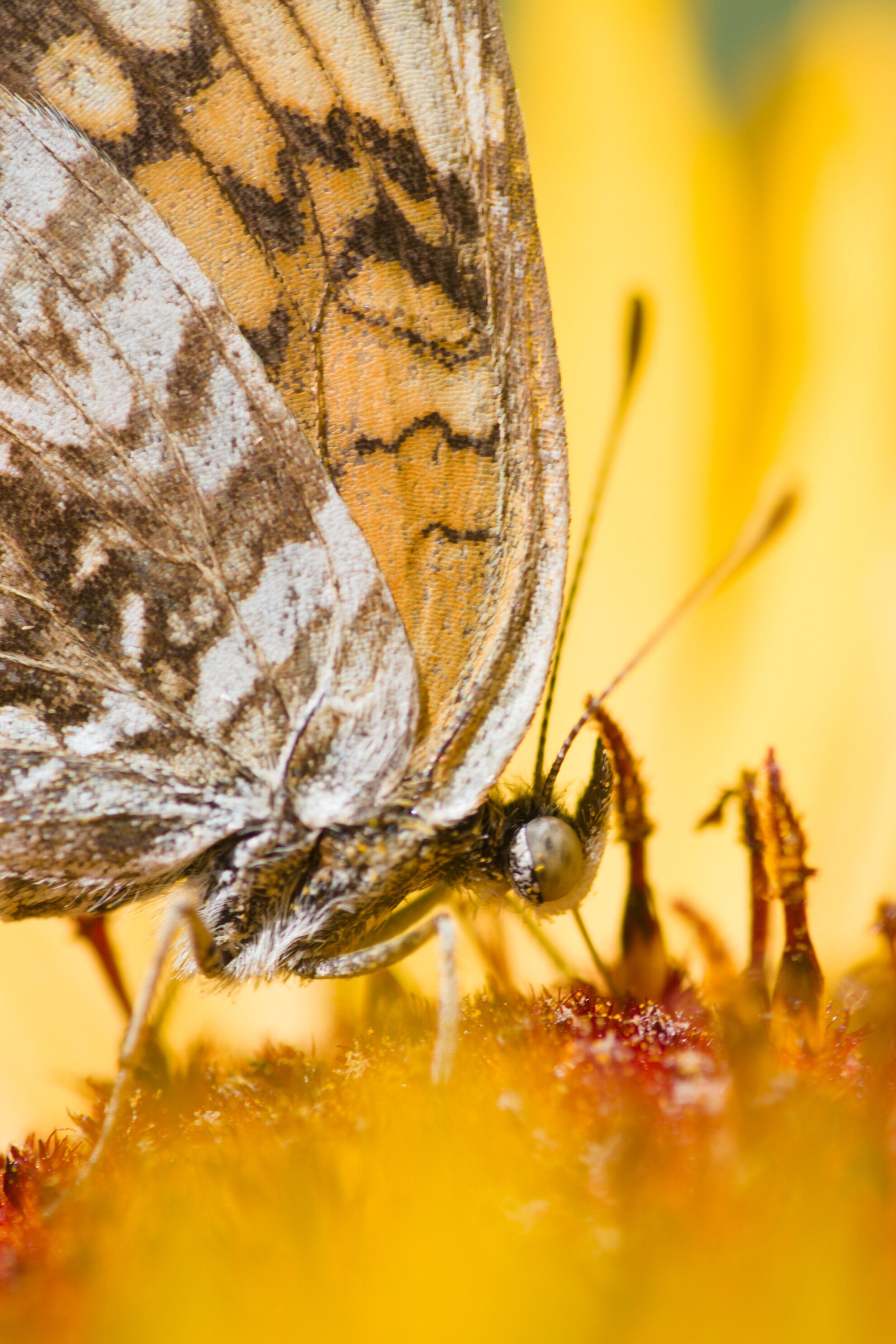
This Gorgone Checkerspot (Chlosyne gorgone) belongs to the family Nymphalidae, the “brushfoot” butterflies. They are nicknamed “brushfoots” because they stand on only four legs and have shrunken, brushlike front legs.

This Northern Crescent (Phyciodes cocyta) is perched on a blade of grass, oriented to soak up some of the day’s sunlight. Butterflies may select locations and position their wings differently to help regulate their body temperature.

Pollinators do not spend all of their time on flowers, and it is important to take many factors into account when we discuss habitat management decisions.

This leafcutter bee (genus Megachile) seems to be staring at the camera with those massive eyes, doesn’t she? If you look closely, you can see that she also has massive black mandibles (or 'jaws') for cutting and carrying pieces of leaves to line her nest.

H. ligatus is a species of sweat bee that displays social behaviors, but not in the same way that honeybees or bumble bees do. H. ligatus workers are kept from becoming reproductive through aggressive displays by the dominant female(s) in the nest.

Emerging as an adult from a pupal exoskeleton is an impressive process, but it can leave the newly molted butterfly vulnerable to predators. This variegated fritillary was unable to fly away from danger until its wings hardened.

Bees fly during the day, but they may still be flying at sunset. This digger bee (Anthophora) was still flying flower to flower at sunset, and it wasn’t alone; there were lots of bees taking advantage of the last rays of sunlight.
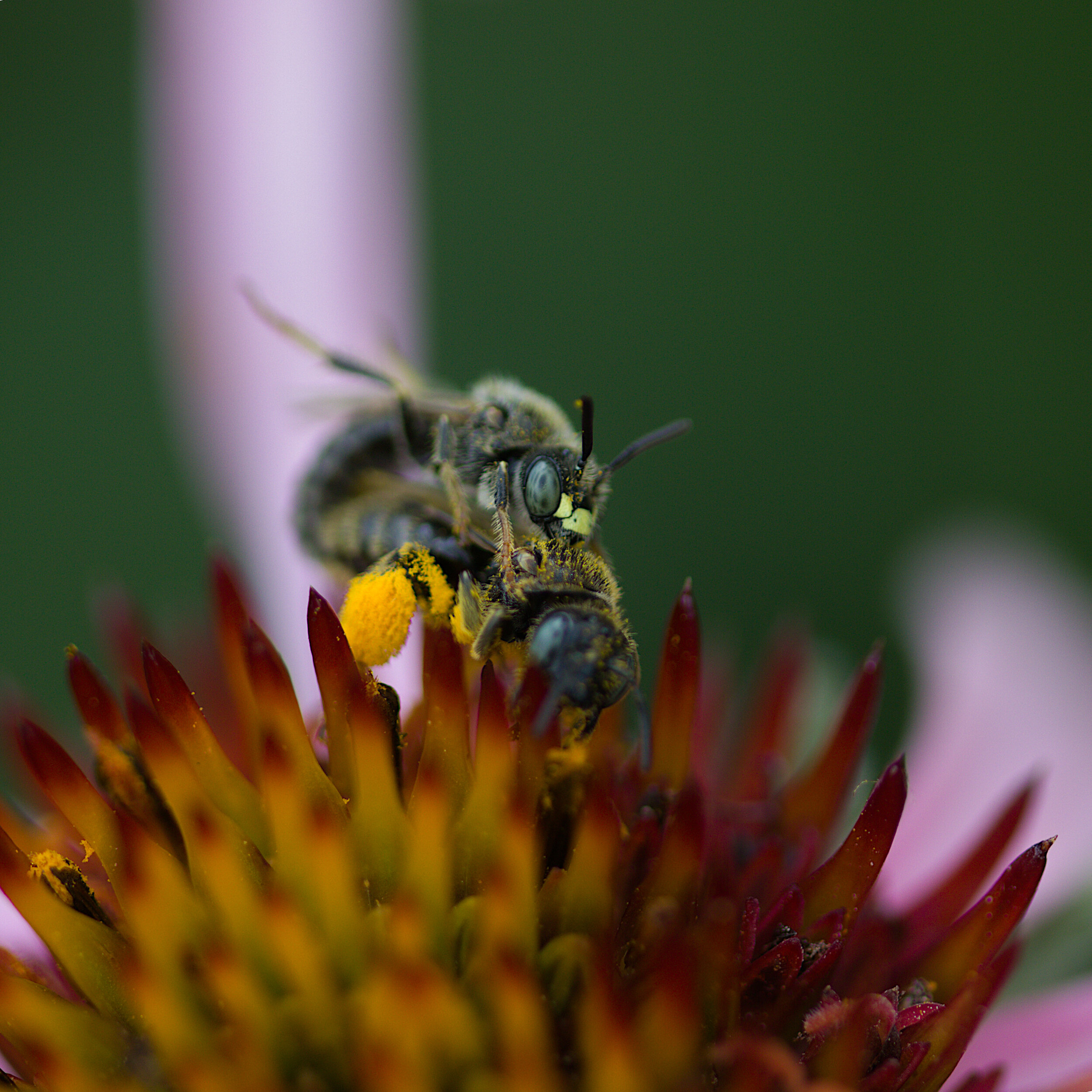
While many people may think of males as larger and more powerful than females, that isn’t always the case. Male bees tend to be smaller and more slender than females. This digger bee male is on top of its larger female counterpart.

This Great Basin Wood-Nymph (Cercyonis sthenele) blends in quite well with the brown soil and branches on the ground around it. This wood-nymph blends in especially well because of how it is holding its wings; the eyespots on its front wing are almost completely hidden behind its hind wing.
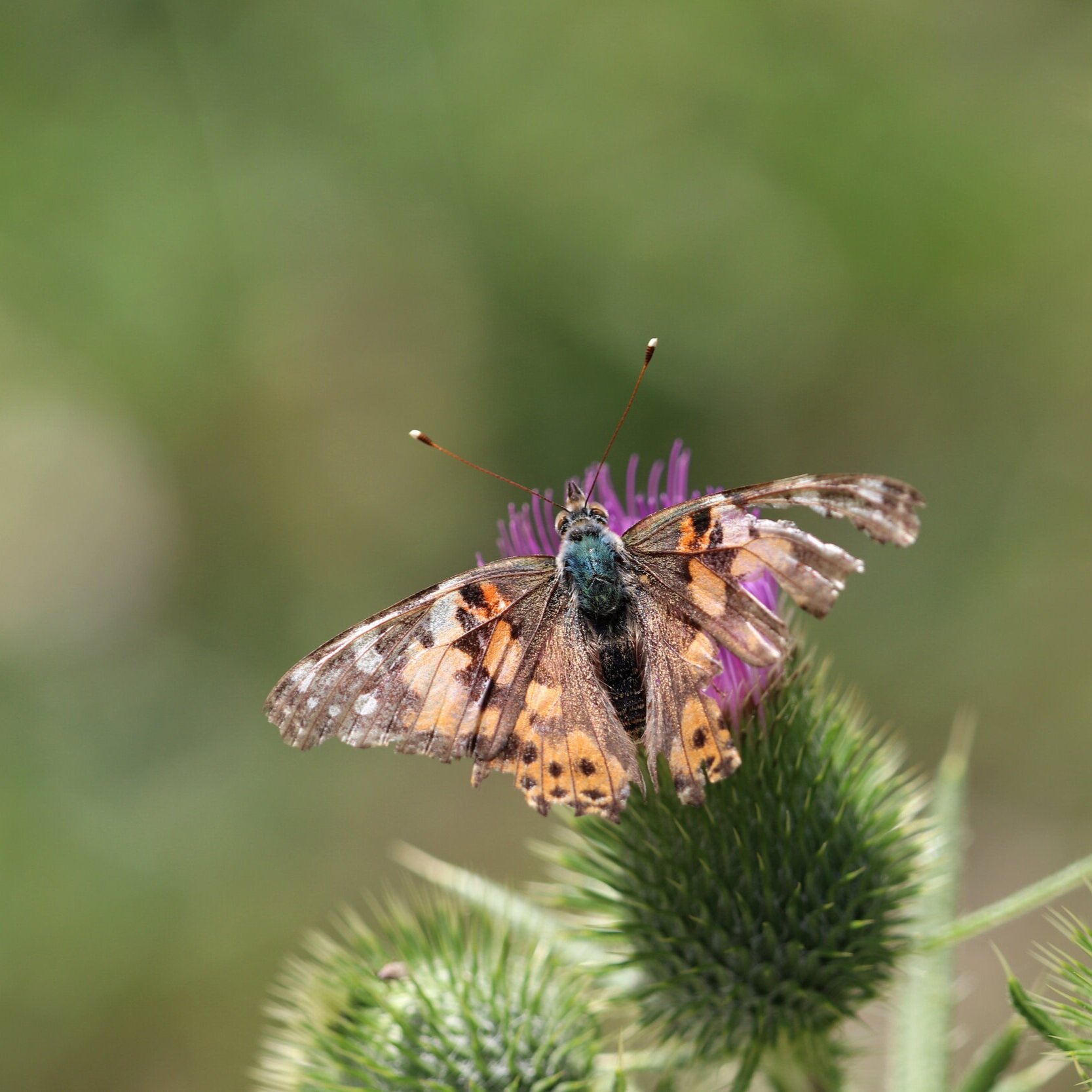
This Painted Lady (Vanessa cardui) was flying flower-to-flower, despite its tattered condition! Painted Ladies migrate, and they cover ground more quickly than their larger Monarch cousins.

Diadasia females, such as this one, collect pollen on the branched hairs on their hind legs. Their nests are often marked by turrets or chimneys. So far, researchers are unsure what these turrets are for, but some guess that they’re for defense or to help the female find the nest after foraging trips.
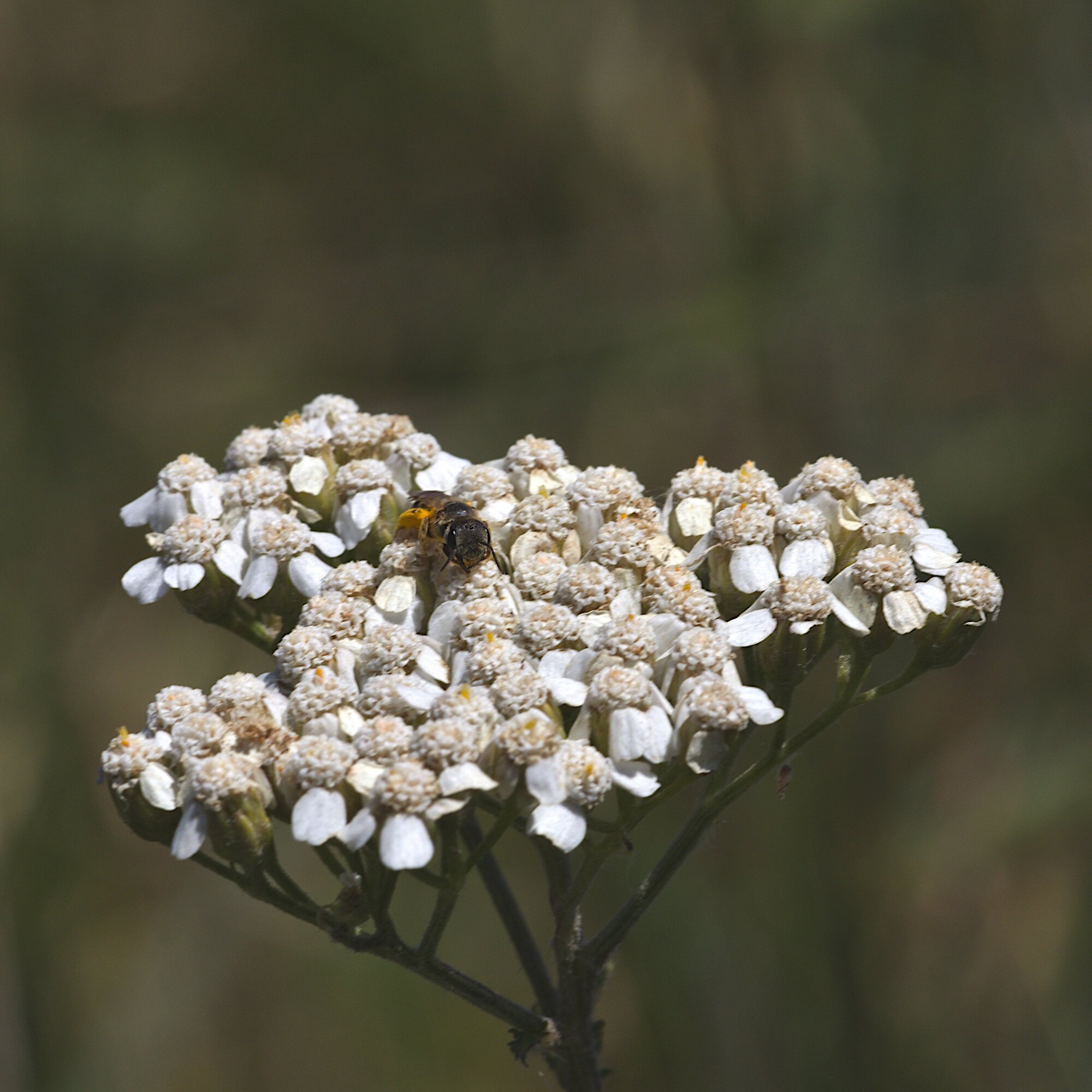
This little sweat bee (Halictus ligatus) was flying between yarrow flowers when I saw it. Small bees like this one are important for flowers like yarrow because larger pollinators tend to be uninterested in them.

This broad sunflower (genus Helianthus) is attractive to larger pollinators; small flowering plants may not support their weight or provide space to land. Pollinator species may be attracted to different colors too. A variety of flower sizes and colors is important to pollinator diversity.

This Painted Lady (Vanessa cardui) is soaking up the day’s last rays of sun between patrol flights. Painted Lady males often patrol for females during evening hours.

Many insects gather in areas with wet sands and soils to drink water rich in salts and minerals. Butterflies are especially common in these areas on sunny days, creating fluttering rainbows around many puddles as well as pond and stream edges.
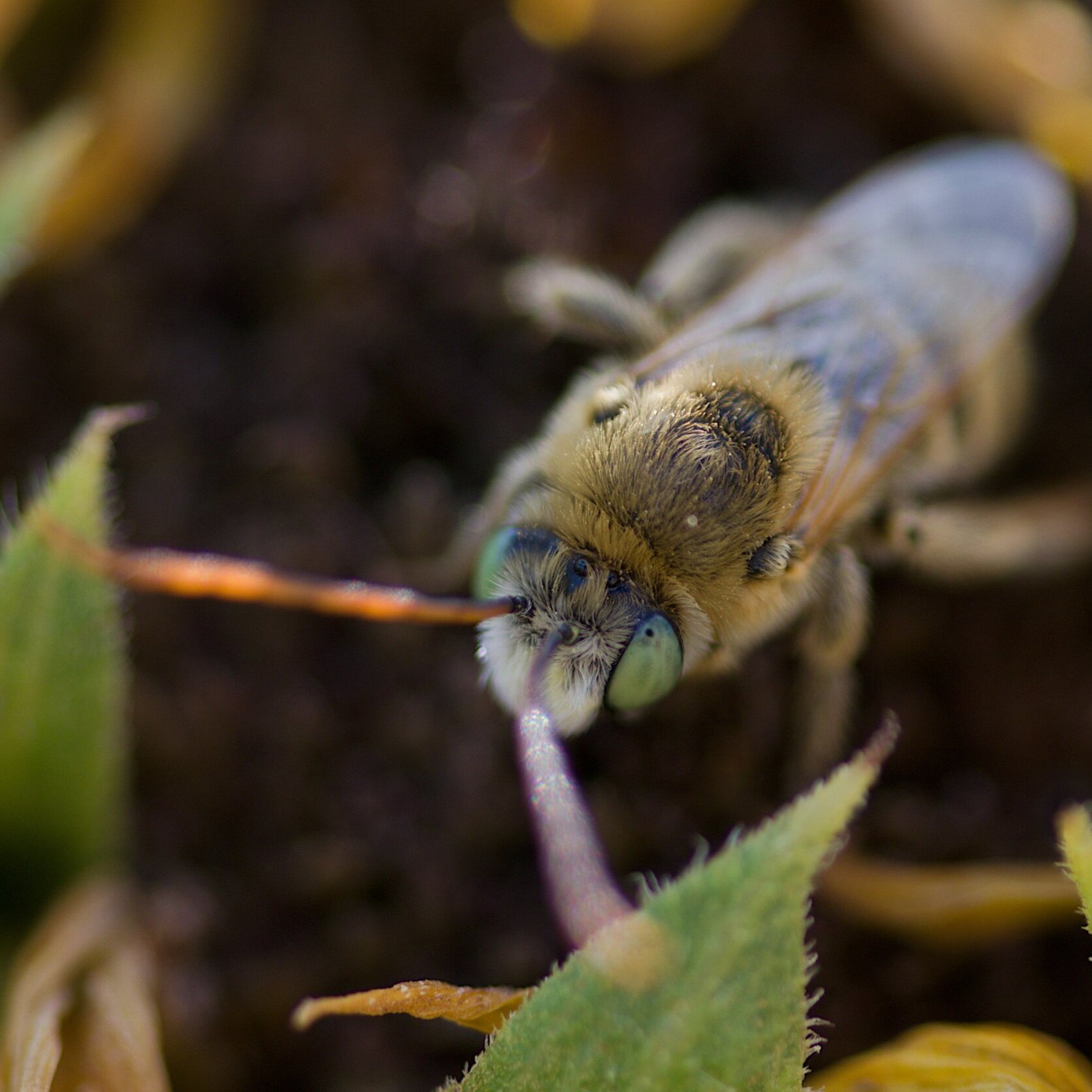
It’s hard to tell from this photo, but this long-horned Melissodes male was standing on a sunflower. He may have been simply hanging out there, or he may have been drinking nectar. While male bees do not have to collect pollen to feed to their young, they do still have to drink nectar to survive.

This photo of a Rocky Mountain Parnassian (Parnassius smintheus) was taken on a windy day when most butterflies were taking shelter on the ground between plants. Bare ground surrounded by plants can both be important for sheltering from wind or other weather events.

Each bee species has a “tongue” length based on the types of flowers they feed at most. This female Megachile (genus) has a longer tongue to get nectar from the base of deeper flowers. There are over 200 species of Megachile known to be in North America.

The genus Megachile belongs to the family Megachilidae. Most Megachiles are solitary, unlike bumblebees and the non-native honeybee. Megachiles are “Leafcutter” bees; females line their nests with leaf cuttings.

This is a mating pair of Melissa’s Blues (Plebejus melissa). There is not generally a size difference between the sexes in Melissa’s Blues butterflies. The smaller individual in this photo may have been slightly malnourished as a caterpillar.
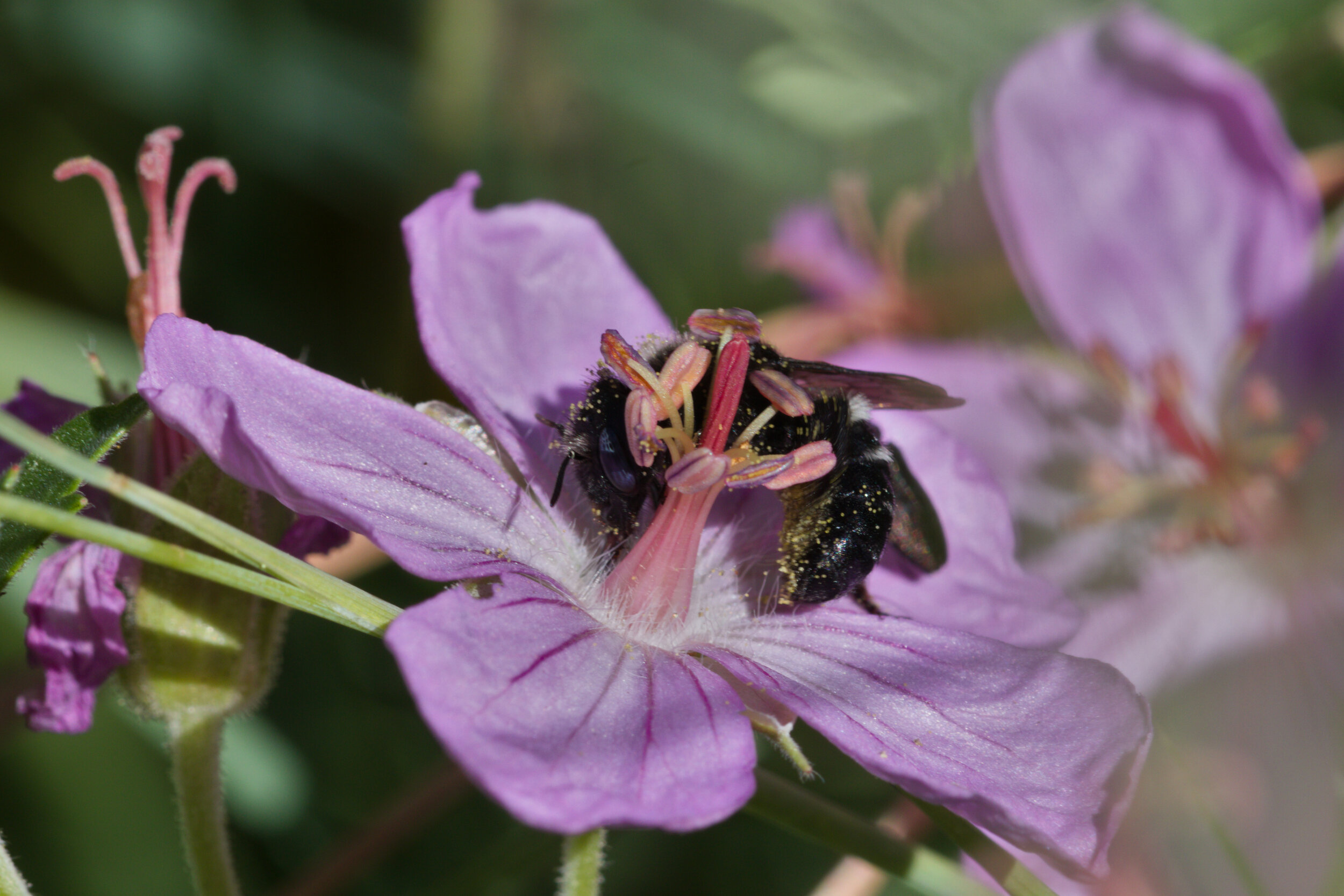
Female bees collect pollen to feed their offspring. While most female bees collect pollen on their hind legs, female bees in the family Megachilidae collect pollen using the long “hairs” on the underside of their abdomens. Hoplitis is a genus that belongs to the family Megachilidae.

This is another photo of the Painted Lady male (shown above also) after one of his patrol flights. Isn't it cool how his two front legs are curled up right under his head?

Not all butterflies are bright and colorful. Skippers are a large group of butterflies that are often dull brown or grey (although some are brightly colored). There is some debate among scientists whether they should be considered "butterflies," but they do have clubbed antennae, which is a trait other moths don't exhibit.
* Please contact me if you would like to buy reasonably-priced prints of any of my photos!
I can offer more size and cropping options than displayed on this site, and I would love to
create descriptive labels for any print you want to display in your home or business.
